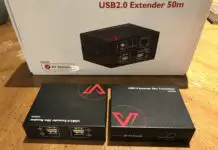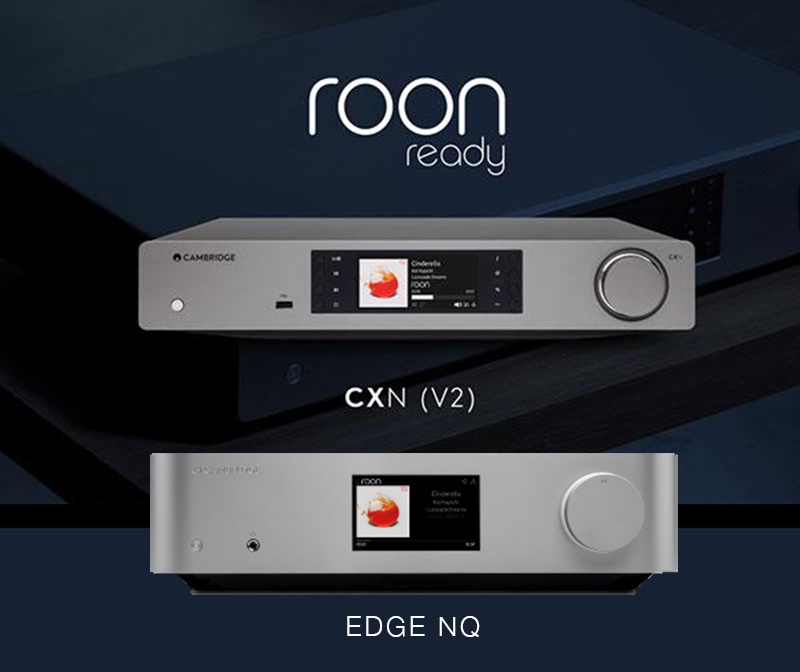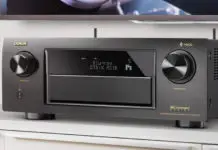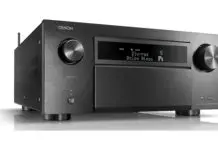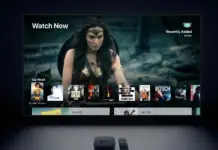In 1979, Sony invented portable music with the original Walkman. A lot has changed since then. But one thing has stayed the same: people’s passion for high quality music.
Today, many people access music through their portable devices—especially their phones. But, most phones, tablets, and portable music players are focused on mobility, not audio quality. These products tend to have mediocre audio stages and terrible headphones. They also carry with them the vestiges of digital music’s advent as evidenced by the mediocre music formats and resolutions they support. They don’t support proper playback of high resolution (Hi-Res) digital music formats, such as FLAC and ALAC. And they certainly don’t reproduce sampling rates up to 24bit/192kHz, which are capable of delivering a more realistic dynamic range; better resolution and detail; and a life-like, “you are there” musical presentation.
Sony aims to change all that with its current Walkman line of products, which includes the Sony NWZ-A17 Walkman Hi-Res Digital Music Player ($299.99 MSRP) and its top-of-the-line NWZ-ZX2 ($1,999.99). Sony’s current Walkman line of Hi-Res players marks the first Sony digital music players to drop “MP3” as part of their name. That’s a major statement.
With iPod sales declining precipitously year-over-year and seemingly everyone consuming digital music on their phones, one could rightly ask, “What on earth is Sony thinking by launching a dedicated player? Are they nuts?” Well, Sony’s thinking is that many listen to their smartphone for portable music, there are lots of people who want a dedicated device for high quality music playback. One could argue that Sony’s point was resoundingly validated with the unprecedented mega-success of the Pono High Resolution Music Player Kickstarter Campaign. Sony is hoping this new Walkman will tap into that huge undercurrent of people who value the quality of their portable music.
Thankfully, Sony has gone one step further than the Pono. Sony has thought through the entire signal chain, not just the player. Complementing the Sony NWZ-A17 Walkman Hi-Res Digital Music Player is the Sony MDR-1A high resolution headphones ($299.99 MSRP). The Sony MDR-1A headphones have been designed as a companion to the Hi-Res Walkman. As we pointed out in our extensive review of the Benchmark AHB2 power amplifier, to gain the full benefits of Hi-Res music, you need to have your entire signal chain—from source file to speaker—all capable of reproducing the fidelity of Hi-Res music.
The Sony MDR-1A come with two detachable 1/8” cables that are 1.2m in length. There is a conventional audio cable and one with an in-line microphone and remote cable for smartphone use. Sony says that the supplied cables are a 4-wire-architecture, with silver-coated oxygen-free copper (OFC) to ensure minimal signal transmission degradation and better audio response at the driver. The cables have a separate ground and signal connection to each driver.
The diaphragm used in the MDR-1A headphones is a 40 mm, dome type, aluminum-coated liquid crystal polymer diaphragm. The headphones can handle 1500 mW (IEC) and have a rated frequency response of 3Hz – 100 kHz. Sony claims that reproducing frequencies up to 100kHz is ideal for high-res music. Even though the limits of human hearing are only up to 20kHz, properly recorded high-resolution music files will indeed capture musical information beyond the limits of human hearing. Whether or not that makes any difference is a matter of debate and beyond the scope of this review. All you need to know is that true high resolution music files have extra information in those upper frequencies and the Sony combo can play it back.
First Impressions and Features
We did a fairly extensive overview of both the A17 Walkman and MDR-1A headphones. You can read our complete first impressions during our unboxing article here. To further elaborate on our first impressions, it’s clear Sony understood that the Walkman would be carried in addition to a portable phone. In order to make the Walkman something you’d wouldn’t mind carrying along as a second device, it had to be small. Sony created the A17 as what they claim to be the worlds smallest Hi-Res music player. Notice the emphasis on the phrase, “Hi-Res music player.”
Indeed, the Sony Walkman is sleek and slender. It’s 1 3.4” wide by 4 3/8” tall and only 3/8” thick. It weighs in at only 2.4 oz. The A17 Walkman doesn’t measure up to the feel and minimalist style of the original or current iPod Nano. Then again it thankfully isn’t the unwieldy size of the Pono either.
 |
| Sony’s Hi-Res Walkman |
There’s a standard 3.5mm headphone jack on the bottom of the unit. Along the right hand side are volume buttons, a hold button, and a MicroSD memory card slot. On the lower left corner of the unit, Sony has included a small loop for a lanyard.
I would call the Sony Walkman’s home screen simple and basic. It doesn’t have an updated feel to it. The iconographic representations don’t have any real draw or flair to them. In other words, they are there to be functional and that’s about it.
Speaking of function, the Sony allows you to do all the basic things you’ve come to expect in a player such as scroll through albums, artists, or songs, and create playlists. For a Hi-Res music player, Sony didn’t dumb down the device. I was pleasantly surprised to see that you can mount the A17 Walkman right on your desktop and use it as a removable flash drive.
It’s capable of storing and displaying photos and videos and also functioning as an FM radio. While Sony says that the device will support video and photos, I can’t imagine anyone seriously using the Walkman for such purposes. I found the TFT screen simply to be too low-resolution to be tolerable for anything like that.
Sony is touting that the A17 Walkman borrows some of the engineering enhancements of its other flagship products. For example, Sony says that the A17 is inspired by the NWZ-ZX1’s thicker wiring and high-grade POSCAP capacitor for power supply stability; that it borrows from the PHA-2’s double-thickness, copper foil printed circuit board; and that it has the same high purity solder as the ES-series.
The Walkman’s is made of an aluminum die-cast chassis that Sony says helps reducing any unnecessary electrical noise. Within the chassis, Sony managed to fit a rechargeable Lithium-ion battery that’s capable of up to 50 hours of MP3 playback and 30 hours of Hi-Res music playback. The battery life of the Sony blows away all its rivals in the Hi-Res music market by an almost 3:1 margin when compared to the Astell & Kern AK 120 and an almost 5:1 margin with other competitors. Long after your mobile phone is dead, at least your music will keep on playing!
The Sony’s internal storage is a modest 64GB. However, you can expand the storage up to 192GB with a micoSD card. For those with large music collections, you could theoretically pre-load microSD cards by genre and then take them with you to go. It’s mind-boggling to think where we were just 10 or 15 short years ago with large portfolios of CDs. Today, you can carry along a massive library in a footprint smaller than a postage stamp.
Sony has included their Digital Sound Enhancement Engine, which they abbreviate as DSEE HX. Sony says that DSEE HX upscales digital music files “to near high-resolution audio quality” by restoring sound that gets lost in the compression process. I’m personally not a big fan of these DSP solutions. I know some users find them to be euphonic, but I’d much rather invest in better quality recordings. I don’t like such things and didn’t try it. Nevertheless, it’s there as a feature for users to try it out.
For those who need convenience in addition to high quality playback, the A17 Walkman features Bluetooth and NFC (Near Field Communication) connectivity. There is no support for WiFi. You can use Bluetooth headphones with the A17 and NFC makes pairing the two as simple as a tap on your wireless headphones. I find that Bluetooth audio playback is very noisy and not something I would consider for reference listening.
Sony has tried to address some of the most problematic limitations of wireless headphone playback by including AAC and aptX codec support. AptX is supposed to produce CD-quality (16bit/44.1kHz) playback over Bluetooth connections. In my experience, it works pretty well. While wireless connectivity won’t give you all the benefits of Hi-Res music, it’s great to see that Sony included wireless connectivity as a convenience.
But let’s face it, if you’re going to spend $299 on this Sony Walkman, it’s all about the music. Thankfully, the Sony supports the most popular lossless formats you’d find on high resolution download sites such as FLAC and Apple Lossless (ALAC). It will also support L-PCM, AIFF, WAV, WMA, AAC, and MP3. Surprisingly, DSD is not a natively supported format. If you want DSD support, you need to step up to Sony’s significantly more expensive $1,200 flagship, the NW-ZX2 Walkman. Those with DSD music collections will need to cross-convert those files to either FLAC or ALAC using a program such as XLD. See our article on XLD here.
To let you know that you are playing a Hi-Res file, the Sony displays a small “HD” notification right on the screen. To emphasize the point, just because the Walkman is showing that HD image does not guarantee that the Hi-Res file is was recorded and mixed in Hi-Res. Sadly, Hi-Res doesn’t always mean Hi-Res. Nevertheless, it’s a nice little feature that I appreciated during my listening.
Setup and Use
I received my review set, consisting of the Sony NWZ-A17 Walkman and MDR-1A headphones, in non-consumer packaging. The combo was obviously used at the 2015 Consumer Electronics Show (CES). The Walkman was pre-loaded with CES audio files giving an overview of the Sony booth. I had to chuckle.
The Walkman also came pre-loaded with a digital copy of Dr. Chesky’s exceptional recording, The Ultimate Headphone Demonstration Disc. The Ultimate Headphone Demonstration Disc contains uncompressed high resolution music with high dynamic range. For comparison, it contains the same files with different levels of compression applied so you can hear the difference between H-Res and CD-Quality music. Including these audio files was a simply brilliant move on Sony’s part. If you ever had any doubt about the merits of how life-like uncompressed, Hi-Res music can sound, you haven’t heard this demo CD. It’s amazing.

To make sure that I was able to sample additional Hi-Res music, Sony provided me with a high resolution download of my choice from Acoustic Sounds. I chose the 24bit/192kHz version of Saint-Saëns: Symphony No. 3 – Symphony in A Major – Le rouet d’Omphale. This version was also available as a 24bit/352kHz FLAC download. I chose the 192kHz version simply because the Walkman didn’t support the higher sampling rate. I listened to this album many times and used it repeatedly during my review of Benchmark’s truly exceptional DAC2 digital-to-analog converter and AHB2 power amplifier in a high resolution signal chain.
While ensuring that I had access to a wide variety of high resolution music material, my experience with Acoustic Sounds once again brought up the point championed by Dr. Mark Waldrep, who has repeatedly advocated for the full disclosure of a recording’s provenance. Only when you know how an album was recorded and mastered can you truly know that you are getting all the benefits of high resolution. Otherwise, you can’t tell what you’re really getting. Unfortunately, there was nothing obvious on Acoustic Sounds about which recording was indeed truly high resolution.
Examining the Sony’s physical elements and its specs, it was pretty evident that Sony did an admirable job of thinking through the Walkman’s function in a high resolution signal chain. But one thing about the Sony that was a bit of a head scratcher was the synchronization/charging cable. The Walkman connector is remarkably similar to the original iPod’s dock connector. It’s a wide, proprietary connector. I would have much preferred that Sony adopt a micro USB connection or a USB-C connector on the A17. There’s no alternative way to charge the Walkman without this cable. So be warned, even with the Sony’s truly amazing battery life, you should pick up an extra cable or two to have in hand.
I used the Sony Walkman with my Mac. Sony includes its own software package called, “Content Transfer.” Could there be a worse named application? The icon used to represent the app likewise looks more like an iPod than the Sony Walkman. There’s no ability to manage and play songs via the app nor can you create playlists or other such activities. Unlike iTunes or JRiver, the app is pretty much useless without the Walkman being plugged in. I would have much preferred a plugin sync option to an existing piece of software as opposed to this solution.
Gripes aside, the software does what it’s supposed to do: transfer songs to and from the Sony Walkman. The process worked flawlessly every time without any hiccup or problem. I could even set a watched folder on my Mac and have the app automatically transfer music from that watched folder.
As I mentioned earlier, the Walkman’s user interface leaves quite a bit to be desired. There isn’t anything necessarily wrong with it. It’s just simple, unremarkable, and pedestrian. The UI would be more at home in 2005 as opposed to 2015.
The A17’s buttons are clearly and cleanly laid out. I could easily manipulate the device without looking at it, which I find to be a real plus of tactile buttons. As commendable as the layout is, the overall interaction with the unit simply isn’t as elegant as an old fashioned iPod. If you’re looking for a work of art, this isn’t your device; but if you’re looking for something that’s functional and does what it says it’s supposed to do then you’ll be well-pleased with the Sony.
Listening Tests
Unlike possibly any other product, Sony has put all its eggs in the Hi-Res Basket. If the A17 doesn’t deliver on its Hi-Res promise, then you’re far better off with your iPhone or Android mobile phone for listening to music.
At the most basic level, all a Hi-Res audio player needs to do is playback high resolution files. At a more detailed level, the core issue is whether or not that player can truly reproduce the dynamics, clarity, nuances, and realism that properly recorded and mastered Hi-Res music files can deliver. If the Sony can only do the former and not the latter then it’s not worth anyone’s attention.
I used the Sony A17 for four months. I loaded it primarily with Hi-Res music but also a handful of my favorite songs and artists in CD-quality. To start off my review period, I decided to work my way through the included Chesky Ultimate Headphone demo audio files. I’ve been familiar with Dr. Chesky’s recordings for many years and own one of his SACD recordings. Anything that Dr. Chesky touches is worth your serious attention.
As high a bar as I had with Dr. Chesky’s works, The Ultimate Headphone demo files simply blew me away. I’ve never—and I mean never—heard recordings like this through a pair of headphones. The opening high resolution track, “When the Saints Go Marching In” was so life-like through the Sony Walkman that I did one of those triple blinks and jerked my head back and forth in disbelief. Right there, on a firmly delineated soundstage with incredible width and depth were all the instruments. The instruments were clean, detailed, and delivered a life-like punch to them. With every high resolution music file the experience was the same. The instruments and the players came alive in an uncanny way. Playing the lower-resolution, compressed files sucked the life out of them. The analogy I can use is like listening to a symphony in the vestibule outside the main doors. You can hear the music just fine but once you open the doors and walk into the space, the music takes on a life of its own. Once you’re in the main performance hall, you can never go back outside. That’s what the experience was like with this album.
Next, I decided to do an additional experiment and see if the Sony could allow me to discern the differences of high resolution files in a pseudo-blind test experiment. I’ve previously written how I took the high resolution audio experiment setup by Dr. Mark Waldrep of AIX Records and Scott Wilkinson, editor of AVS Forum. You can read about the experiment in more detail here.
I listened to these three files through my review set of the Benchmark DAC2 digital to analog converter and preamp, AHB2 power amplifier, and Revel Ultima2 Salon full-range speakers. With that incredible setup, I felt as though I was easily able to discern the difference in the files and tell which ones were high resolution music.
 |
| The AVS and AIX Records Hi-Res Test |
In case you’re wondering, I couldn’t look at the Sony player and tell which file was high resolution and which one wasn’t. Both versions came up with the HD logo on the Sony screen because of the way Mark Waldrep did the final export of the files. You’d also be correct in pointing out that I was potentially biased by listening to the Hi-Res music files through the Revel Salons and Benchmark combo. I readily admit that I found myself looking for some of the same cues I noticed when listening through the free standing setup. However, when I took the test and wrote this review, I was not privy to the real answer of which file was which. All I can tell you is that I came to exactly the same conclusions listening through the Sony equipment as I did with the Bechmark and Revel combo.
The first track I listened to from the AIX Records and AVS Forum high resolution music experiment was “Just my imagination.” What I perceived to be the high resolution version sounded more open. Cymbals had more sizzle and their decay was smooth, natural, and life-like. To try and relate what the difference sounded like between the files is like looking at ripples in a lake after you throw a rock in the water. I felt as though the high resolution file had an almost infinite number of fine ripples. In contrast, the CD-quality file felt like it had fewer and broader ripples without all the detail. Continuing that analogy, in both instances, the water still moves. But with the high resolution music file, you have both a greater number of fine waves and greater amplitude.
Listening to the CD-quality file had a constant veil. Drums lacked punch compared to the high res version. Indeed, at 4:23 and again at 4:25 there is a superb punch of the drum on the high resolution file that was flatter and not as involving on the low resolution version.
Next up was “Mosaic.” The warmth and depth of the guitar’s body was very similar between the two tracks through the Sony setup. Dynamics were perhaps slightly better with the version I perceived to be the high-resolution file, but it was really the high notes that led me to choose which file was which. On the high-resolution file, the strike of the triangle was, precise, and piercing. In particular, at approximately 1:42 into the track, it was very easy to tell the difference between the two versions. On what I perceived to be the CD-quality version, the triangle sounded more rounded and lacked the same sparkle.
The final track, “On the Street Where You Live,” the song’s big band dynamics were preserved with astonishingly life-like range in the file I perceived to be the high resolution version. What struck me was how delicate some of the notes came across even in such a dynamic ensemble. It made me stop and think that when listening to recorded music we fail to receive those beautiful, elegant cues that are such an assumed part of a live performance. To my ears, through the Sony Walkman and headphones, the compression present in the lower resolution version was evident. There was a duller, more two-dimensional sound. Switching to the high resolution track, I clearly felt that I perceived a smoother overall sound. Vocals were three dimensional and truer to life and once again, the high resolution version presented a more engaging sound. To top it off, the crescendo at the end of the song ends with the visceral impact of a kick drum that was just awesome on the high resolution version.
If you had any doubts about the Sony NWZ-A17 serving as the hub of your Hi-Res music, cast those doubts aside right now. The Sony NWZ-A17 Walkman Digital Music Player and MDR-1A headphones passed all of my Hi-Res music tests with flying colors.
Conclusion
The state of Hi-Res audio holds tremendous promise and at the same time so much confusion to both the audiophile and music lover alike. Because many (if not most) audio systems are incapable of reproducing the full benefits of Hi-Res music, many music lovers are left scratching their head in bewilderment and legitimately asking, “What’s the big deal about Hi-Res music? Is this some voodoo or another case of the Emperor’s new clothes?”
I’m a firm believer that you need top notch equipment to hear the differences in properly recorded Hi-Res music. Until now, that meant spending thousands. For a hair under $600, the Sony NWZ-A17 Walkman Hi-Res Digital Music Player ($299.99) and MDR-1A Hi-Res headphones ($299.99) put all the major benefits of Hi-Res music within reach of mere mortals.
The NWZ-A17 Walkman and MDR-1A headphones are an unbelievable Hi-Res audio dynamic duo that brings out the sonic beauty and potential of Hi-Res music. I applaud Sony for thinking through the entire Hi-Res signal chain—from player to headphones—and delivering the audible goods.
Now it’s true that the Sony is neither the sexiest portable player on the market nor is it paired with the best complementary software. It also doesn’t support DSD audio files. But, those user-side gripes aside, the Sony combo is a supersonic powerhouse that has it where it counts most: size, weight, battery life, audio quality, and a price point that makes its competition green with envy.
So let me say it straight: if you are serious about getting the best quality audio from your current collection and maximizing the potential of Hi-Res audio, then look no further than the NWZ-A17 Walkman and MDR-1 headphones. Since the iPhone’s introduction in 2007, the Sony NWZ-A17 Walkman is the first device that has given me a legit reason to carry a dedicated music player once more. Highly recommended.











